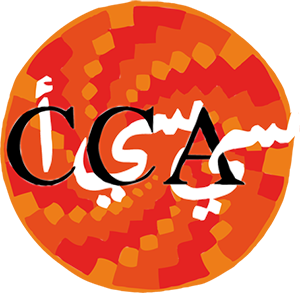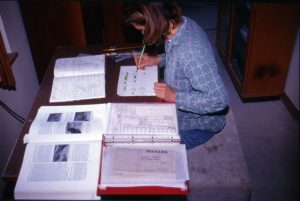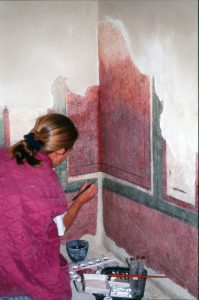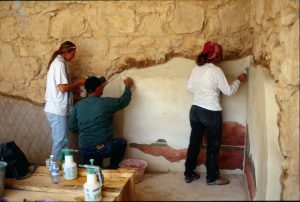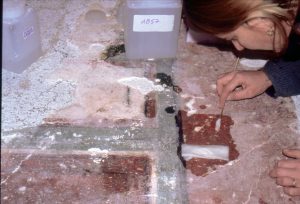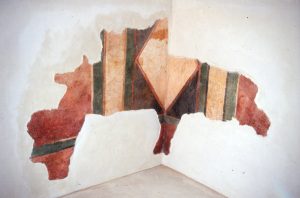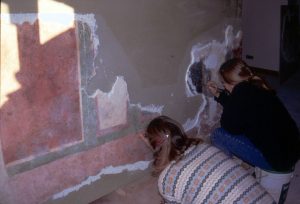In November 1994, some Roman frescoes detached with the ”strappo” technique in the 1960s from the archaeological site of Masada were found in the deposit of the Israel Museum, Jerusalem. The Roman frescoes, depicting faux marble, originally adorned the walls of the house in Masada called Liscat Hamefaked, which was probably the residence of an officer in charge of the local garrison. Only a few photos were taken before they were removed from the site. What was left of them was a few shreds of paint and plaster firmly glued onto jute canvas and haphazardly shelved.
The CCA, Centro di Conservazione Archeologica, developed a program for their conservation and return to the site, to history and to visitors.
The program involved gathering the frescoes, packing and transporting them to the CCA laboratory in Italy in order to restore the surfaces completely. Some of the delicate lab operations were documentation, consolidation, application on a new movable support, cleaning and treatment of lacunae.
Once the frescoes had recovered their aesthetic and material coherence, they were wrapped in special packing materials and taken back to Masada, where they were installed in their original location for presentation to the public.
